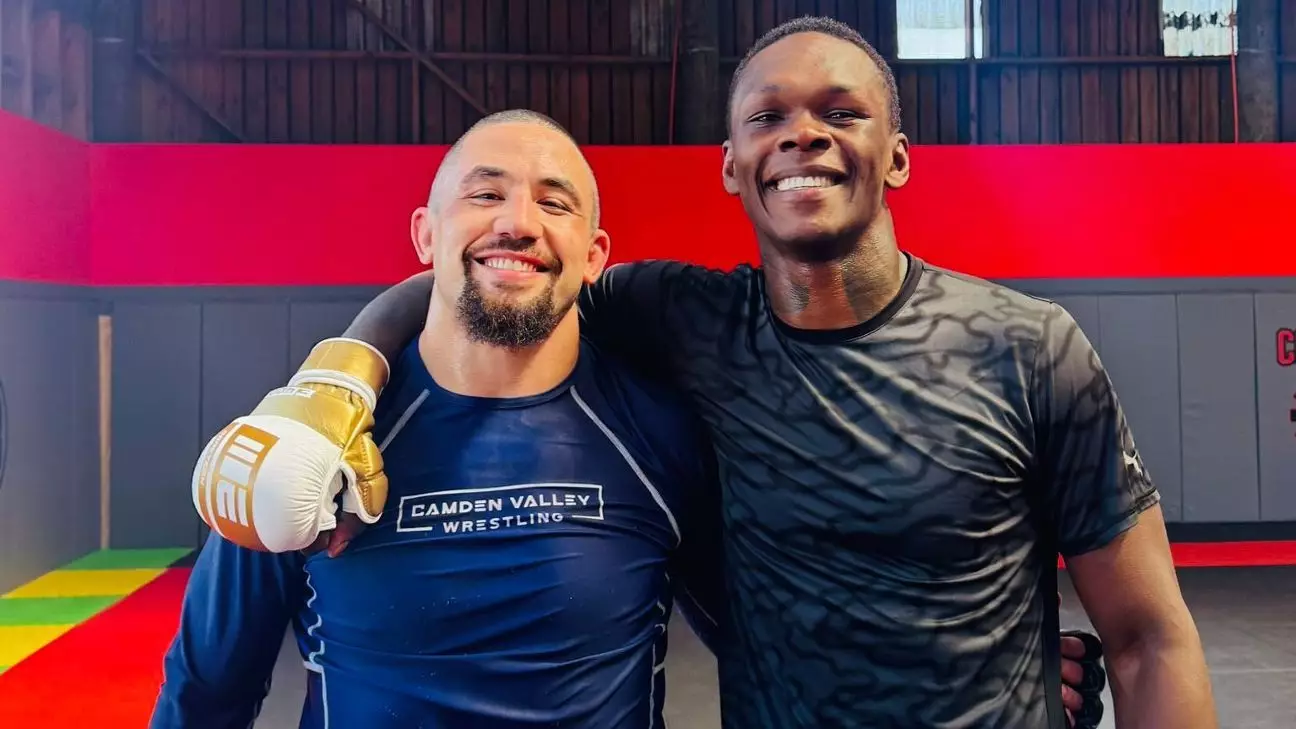In the world of mixed martial arts (MMA), rivalries often define fighters’ careers. Israel Adesanya’s relationship with Robert Whittaker is a prime example, having evolved from fierce competitors to collaborative training partners. Recently, the New Zealand fighter posted a heartfelt message on social media with Whittaker, showcasing a surprising and warm camaraderie that transcends their past enmity. This partnership emerges during a crucial point in Adesanya’s career, where he seeks to reclaim his status as a top contender following a challenging period.
The atmosphere during their training session at City Kickboxing in Auckland hints at the shift in dynamics between these two former foes. Their history, filled with heated exchanges and intense championship bouts, painted a canvas of rivalry, yet it seems time has allowed both fighters to put their past behind them. The acknowledgment of shared experiences as former champions speaks volumes about their mutual respect. Adesanya’s praise for Whittaker’s experience demonstrates an understanding that collaboration can often breed success, even among those once thought to be adversaries.
Collaboration Over Competition
What stands out significantly in Adesanya’s remarks is the emphasis on learning and growth. He enthusiastically described working with Whittaker as “awesome,” recognizing the “energy and experience” that his Australian counterpart brings to the mat. This reflects a maturity in Adesanya’s approach to training, showing that he values diverse perspectives, even from those he previously competed against. In the high-stake environment of the UFC, such collaboration can provide athletes with a competitive edge.
The notion of a united front among fighters from Australia and New Zealand further strengthens the sentiment of an evolving MMA community. The two fighters, both nearing the twilight of their careers with Adesanya at 35 and Whittaker at 34, share an understanding of their professional journey and the mental and physical challenges unique to their trajectories. This shift from rivalry to mentorship signifies a crucial development in the sport, highlighting that camaraderie can exist even in an arena as brutal as MMA.
Adesanya’s previous fight against Dricus Du Plessis underscores the reality of competitive sports. He admitted to feeling fatigued during that bout, which contributed to his defeat. This loss, marked by both physical and mental pressures, has led him to reevaluate his training regimen. The insights gained from Whittaker are not merely about physical prowess but resonate on a deeper level, as both athletes understand the mental toll that the sport exacts.
Indeed, Adesanya mentioned that he and the City Kickboxing team have revamped their training schedule to optimize efficiency and address fatigue issues. This proactive approach reveals a commitment to continuous improvement, which is vital in maintaining an athlete’s performance over time. The introduction of “four-week blocks” indicates strategic planning that considers not just the demands of individual fights but the overall health and readiness of the fighter.
The continuation of Adesanya and Whittaker’s partnership appears promising, suggesting that this could be the start of a new training dynamic among fighters with shared experiences. Adesanya expressed his eagerness to train with Whittaker again in the future, emphasizing that there are no rigid plans yet but rather an open door to collaboration. This fluid approach reflects the evolving nature of training in MMA, showing that fighters are willing to break down the barriers of competition for mutual growth.
As he prepares for his upcoming showdown with Nassourdine Imavov, Adesanya is clearly putting significant effort into ensuring the lessons learned from past experiences will guide him to success. He is aware that the stakes are high and that every training session, particularly those with seasoned fighters like Whittaker, can offer invaluable insights.
The training reunion between Israel Adesanya and Robert Whittaker marks a pivotal transformation in their relationship and the sport at large. The progression from rivals to collaborators underscores an important lesson: success in MMA—or any sport, for that matter—often hinges on the strength of community and shared knowledge. As both fighters navigate the latter stages of their careers, their partnership may serve as a beacon for future athletes in an industry notorious for its competitiveness. The willingness to embrace collaboration over rivalry could well redefine how fighters prepare for challenges ahead, fostering a spirit of unity that resonates beyond the octagon.

